Papillomas are neoplasms on the body that appear as an indicator of the presence of the human papillomavirus or HPV in the body.
Sometimes they are small and almost invisible, but more often than not, papillomas really interfere with life, cling to clothes and cause pain. Is it necessary to remove papillomas on the body, how it is done and what if we neglect the removal, we will find out further.

Содержание:
- 1 The main cause of the disease
- 2 The danger of disease
- 3 Is it necessary to get rid of papillomas or can it disappear on its own?
- 4 What happens if you tear
- 5 Do papillomas need to be removed? The doctor will tell
- 6 The subtleties of the treatment of papillomatous elements
- 7 The need for medical supervision
- 8 How to get rid of formations
- 9 Is papilloma treated by folk methods
- 10 Disease prevention
The main cause of the disease
Papillomavirus can develop in a person for a number of different reasons, however, the main one is insufficient attention to hygiene procedures. Failure to wash hands or use contraception during sexual intercourse are the most common culprits in the development of HPV. Doctors also identify some other reasons:
- long-term treatment with strong drugs, in particular antibiotics;
- reduced immunity;
- stressful state;
- prolonged infectious diseases;
- alcohol addiction.
The presence of the above situations in a patient is not a guarantee of the development of HPV, but only increases the risk of the disease.
The danger of disease
To determine whether papilloma is dangerous, it is necessary to conduct a preliminary study of it. The fact is that today more than 70 viruses of this type are known – far from all of them are dangerous. However, if the disease is not given the necessary attention, then, progressing, it can pose the following health hazards:
- inflammation;
- constant pain;
- transmission of the virus to the baby at birth;
- “degeneration” of neoplasms into a malignant tumor;
- development of cancer.

Regardless of which area on the body suffers from papilloma, if the neoplasm causes discomfort and even more pain, this is a direct indicator to consult a specialist.
Is it necessary to get rid of papillomas or can it disappear on its own?
The nodules, which appear as an indicator of the presence of HPV, form growths that resemble a rooster’s comb. They can grow in size, but they can’t shrink. However, medical practice shows that in rare cases, warts go away on their own:
- Young age. Usually, experts do not recommend removing papilloma from a child, because it can simply disappear when he gets older and the immune system is fully formed.
- Stress background. If the cause of the neoplasm was prolonged stress or a depressive state, then it is likely that removal will not be required. The situation is similar with non-durable diseases of an infectious nature or a temporary decrease in the protective functions of the body.
Please note that papillomas can be of different types. For example, if we have a papilloma that has a leg, or is one of the genital warts, then it probably will not disappear on its own: surgical intervention will be required.
What happens if you tear
The most impatient and inattentive to their health are ready to remove the growth manually, without fear of pain. This cannot be done under any circumstances!
The fact is that an unexplored wart may well turn out to be a malignant tumor. In addition, with mechanical unprofessional damage, a benign tumor can degenerate into a malignant one. Consider other cases of wart tear:
- Broke off by accident. Large growths that constantly rub against clothing can come off due to careless movement or other external influence. As a rule, this situation occurs with papillomas on the head and neck and is accompanied by severe pain, sometimes bleeding. In this case, it is necessary to consult a doctor as soon as possible and, if possible, take the detached papilloma with you.
- Broke off on her own. There are times when yesterday the papilloma was in place, but today it is no longer there. In this case, it means that the body itself coped with the virus and the papilloma came off. Such deliverance is painless and imperceptible, there is no reason to panic.
Even if we have a keratoma in front of us – a benign neoplasm – it is impossible to remove it on our own in any case. If the patient is concerned about the growth, it is better to seek help from a professional.
Do papillomas need to be removed? The doctor will tell
The opinion of experts about the removal of papilloma is unanimous: if the growth gives you discomfort, take care of its examination and removal. However, it is not always necessary to remove growths: benign neoplasms that do not interfere with a person in any way can remain quite safely on his body.
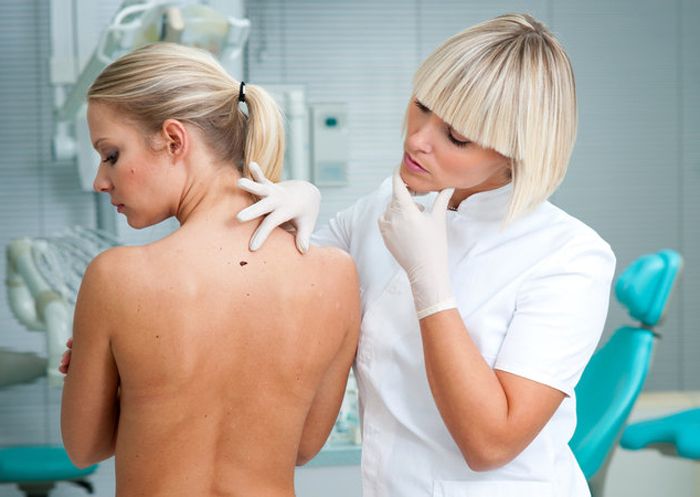
When should papillomas be removed?
Consider a number of cases where the removal procedure is unavoidable:
- growths that are constantly injured by clothing or jewelry;
- location on mucous membranes (tongue, mouth, throat);
- papillomas on the face, in particular in the eyelids;
- large neoplasms growing over time;
- plantar warts.
Even in the above cases, a comprehensive study is required first, and only then treatment and removal. Also read how facial papillomas are removed .
The subtleties of the treatment of papillomatous elements
Often, patients are afraid to go to a dermatologist or surgeon for help, as they are worried about various questions regarding the treatment procedure. Let’s take a look at the most common ones below:
- Does it hurt to remove? Pain directly depends on the method of removal and the pain threshold of the patient. However, modern methods of anesthesia make the procedure as painless as possible – even in intimate areas.
- Is removal dangerous? You can get rid of a wart in conditions of professional control by a specialist absolutely safely and quickly. Self-removal is unacceptable, because it can pose a health hazard.
- Can it be treated at home? At home, treatment is possible only if two conditions are met. Firstly, papilloma has already been investigated and it is known that it is not malignant. Secondly, the size of the neoplasm is small.
The main feature of the treatment is that it must take place in 100% sterile conditions, excluding the possibility of contamination, dust, microbes on the damaged area of the skin.
The need for medical supervision
Medical supervision is required in several cases:
- First stage. When treatment has not yet been prescribed and the nature of the papilloma has not been determined, medical supervision is very important, since there is a risk of developing a malignant neoplasm.
- Stage of treatment. Medical supervision is especially important at the stage of treatment, especially if it is carried out at home .
- Pregnancy. Before planning a pregnancy, it is recommended to consult a specialist to identify HPV and its preliminary treatment.
- After removal. In this case, control is needed if the patient has discomfort after removal.
Do not neglect the advice of specialists, especially in situations where the neoplasm bothers you, hurts, causes discomfort, or changes.
How to get rid of formations
Modern medicine offers a whole range of methods for removing papilloma:
- Laser. Laser therapy ensures the removal of the wart under the root without traces.
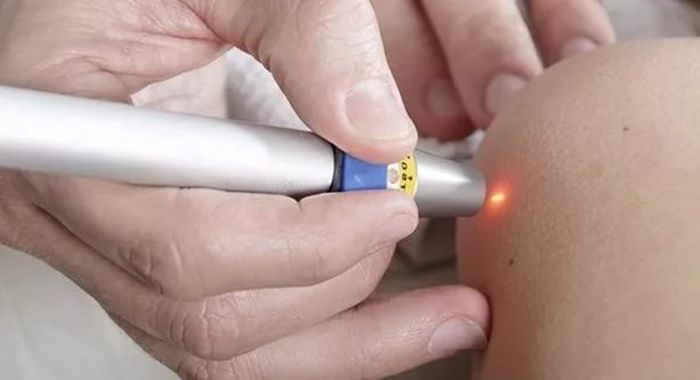
- Electrocoagulation. Removal occurs with the help of high-frequency current.
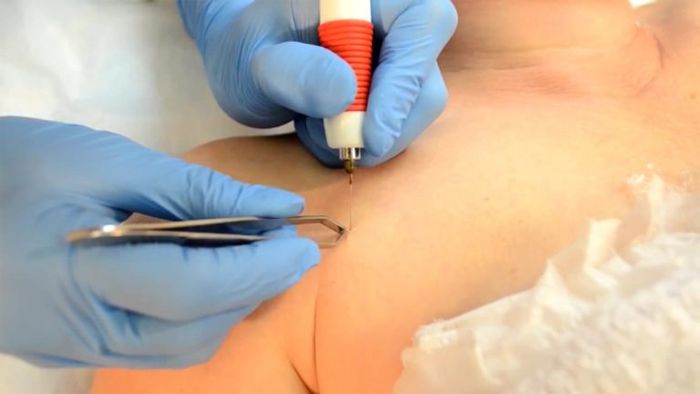
- Radio wave therapy. Removes neoplasms using the Surgitron device.
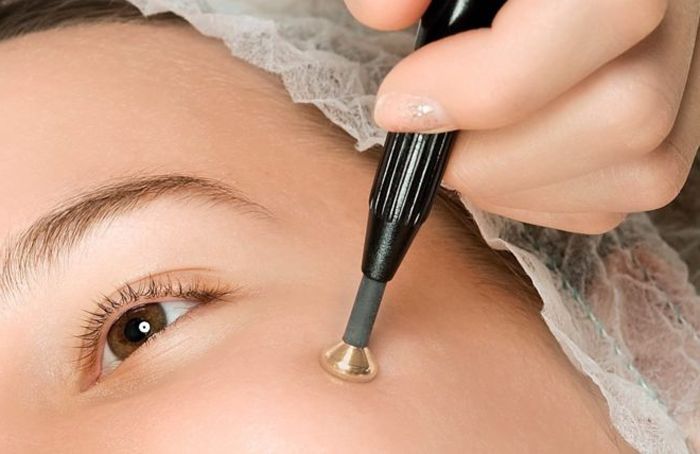
- Cryodestruction . In this case, the papilloma is affected with liquid nitrogen by freezing.
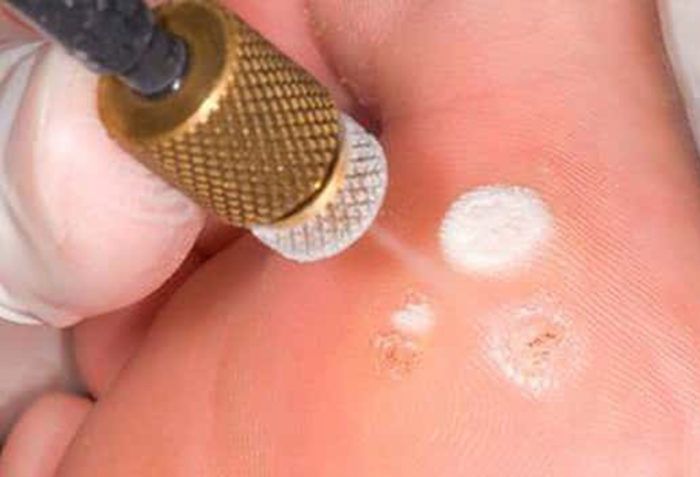
As a rule, the patient can choose the method of removal on their own. However, in special cases, the specialist recommends one or another method for better treatment.
Is papilloma treated by folk methods
There are many folk methods of treatment that help to successfully deal with papillomas. However, their use is not always acceptable. Pay attention to the following conditions:
- The neoplasm has been proven to be non-cancerous.
- During treatment, there is no pain.
- The size of the wart is not more than 0.7×0.7 mm.
- The first consultation was with a specialist.
As a rule, at home, it is possible to get rid of papilloma in 1 month, and the first results are noticeable after 10-14 days of treatment. If there is no result, or you experience discomfort and pain during cauterization, then the procedure should be stopped and consult a doctor.
Disease prevention
Prevention is easier than cure. Therefore, pay attention to the following simple methods of prevention:
- Prevention. Always use contraception, even during oral and anal sex.
- Hygiene. Observe hygiene rules, including hand washing, when visiting public places – swimming pools, gyms, etc.
- Doctor’s supervision. Annual regular check-ups by a specialist will help detect the infection at its early stage of development.
Also today there are special vaccinations that protect the body from HPV. They are not a panacea, but they help fight this complex and dangerous virus throughout life. Seeing a doctor early is the best way to prevent dangerous HPV exposure and keep yourself healthy.







